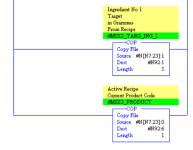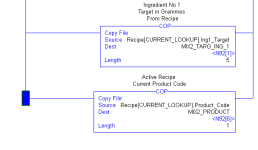I have upgraded an old RS500 project to Studio 5000, it has thrown multiple errors which I am currently working through.
I have looked through other posts and read the help file for Indexed Indirect Addressing but not sure how it translates.
I am confused as to why the upgrade has thrown errors? Why does Studio 5000 not understand what the tag should be in the COP instruction?
Also, does anyone know how I would retag it in my new program?
Please see the two pics attached.


I have looked through other posts and read the help file for Indexed Indirect Addressing but not sure how it translates.
I am confused as to why the upgrade has thrown errors? Why does Studio 5000 not understand what the tag should be in the COP instruction?
Also, does anyone know how I would retag it in my new program?
Please see the two pics attached.







